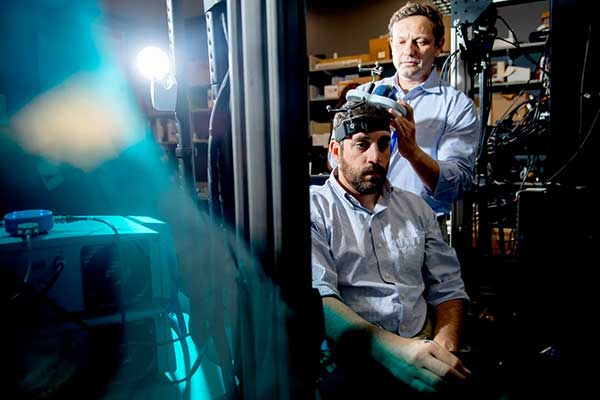The New Role of AI in Physical Therapy

ECE Affiliated Faculty Eugene Tunik and Bouvé/ECE Assistant Professor Mathew Yarossi are investigating the potential of AI systems in physical therapy. Though the attentiveness of a human physical therapist remains essential, AI systems could play a critical role.
This article originally appeared on Northeastern Global News. It was published by Cesareo Contreras. Main photo: Northeastern professors Gene Tunik and Mathew Yarossi at work in the university’s Laboratory for Movement Neurosciences. Photo by Matthew Modoono/Northeastern University
Is AI revolutionizing rehabilitation care? This Northeastern expert is digging deep on the issue
A good physical therapist has several key, very human traits, explains Mathew Yarossi, a Northeastern University professor of electrical and computer engineering, and physical therapy, movement and the rehabilitation sciences.
Physical therapists are attentive and observant to a patient’s needs, closely examining their range of motion and ability to complete an exercise or task. The job also requires adaptability and strong communication skills. If a patient is unable to complete a certain movement, for example — whether because of pain or another unrelated issue — the therapist must readjust and clearly communicate the new plan to the patient.
It’s a constant “task dynamics loop” in which therapists are observing and reacting, Yarossi says.
“The therapist is continuously monitoring the patient for safety, for performance, fatigue, affect,” Yarossi says. “They’re providing feedback on performance. They’re motivating the patients. They’re educating the patient. The therapist is doing all these intelligent actions.”
So how does artificial intelligence and robotic technologies enter the mix in a job that requires such innate and dynamic human qualities?
These systems can play a critical role in providing therapists with key data to understand the patient’s neuromuscular function as they complete these exercises, enabling “a new brain “dynamic loop” to occur in sequence with the task dynamics loop. This can play a key role in the development of more targeted and effective treatment plans, Yarossi, who works in the university’s Laboratory for Movement Neurosciences, says.
Read full story at Northeastern Global News